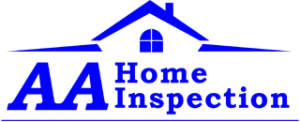We want you to get the most out of your home inspection! If that sounds like something you are interested in, please continue reading our to-do list before a home inspection and then contact us to schedule your home inspection!
If you’d like to save or share this article, download this article with pictures!
What Can I Proactively Do Before a Home Inspection?
This article identifies items commonly found during a home inspection and how the homeowner can proactively address these before an inspection ever occurs. By eliminating these concerns, the transaction will be smoother, and you will remain in the driver’s seat. The items are not listed in any specific order and apply to all homes of all ages.
This educational article about home inspections is provided by AA Home Inspection. AA Home Inspection is a locally owned and operated home inspection company serving Cincinnati and Northern Kentucky with the most thorough home inspection services in town!

Common Roof Issues
Penetrations at the plumbing vents (roof jacks). The rubber flashing commonly fails as soon as 7 years due to the sun’s UV rays breaking them down, and is sometimes split or damaged at installation. When the flashing fails, water can enter through the roof penetration, though it may take some time before the stain is visible. The best practice is to inspect these from the roof surface since the damaged rubber flashing commonly splits on the high side, which is unable to be seen from the ground.
The preferred repair is the replacement of the complete roof jack with the rubber flashing. An acceptable repair is a rubber flashing ring/rain collar that is oversized at the outside diameter placed over the top of the rubber flashing. A substandard repair is using roofing mastic around the pipe and over the rubber flashing.
Homes with brick chimneys often have issues above the roofline that are not visible from the ground. Chimney crowns (a concrete cap across the top of the chimney) are often cracked. The counter and step flashing at the roof are often loose and/or missing. These situations can result in brick-and-mortar damage as well as interior water leaks.
The preferred repair is for a qualified mason or chimney sweep to correct it so that water does not penetrate the brickwork or into the roof framing. In many instances, the chimney crown will need to be replaced.
Roof Maintenance
All roofs, especially three-tab shingle roofs, need to be inspected periodically for maintenance concerns that can lead to extensive repairs if not immediately corrected. Loose shingles and/or raised nails that allow the shingles to easily lift in wind, often result in broken tabs, indicating wind damage to the roof.
The loose shingles can commonly be re-sealed by hand. If nails are lifting the shingles, the nails need to be re-set. If shingle tabs are missing these need to be properly repaired using new shingles as needed.
The Exterior of the Home
Gutters that have not been regularly cleaned can cause problems. Make certain the gutters are cleaned and sealed. The downspouts not draining away from the home can cause soil erosion and foundation problems leading to settlement and water penetration into the basement. Keep in mind that the soil around the home is commonly excavated between 3 and 5 feet larger than the foundation when the home is built and not compacted down. This 3 foot, plus perimeter, allows water to drain into the soil and has to be removed from the structure by the footer drains.
The preferred repair is to have the downspouts and sump pump drains discharge at least 5 feet from the home with a positive drainage plain away from the home to prevent the water from draining back to the foundation. These drains are often buried for esthetics and easy maintenance.
The plastic splash blocks are considered acceptable, but they do not ensure the water drains out far enough away from the foundation and are easily knocked out of place.
Basement and/or crawl space water intrusion can cause multiple problems. Excessive moisture can result in damaged finish materials, mold, and odors.
Check the exterior of the home for drainage issues; gutter downspouts, negative drainage toward the home, etc. If you find areas where you can visibly see water stains and they are associated with wall cracks, consider repairing the cracks. In the event that a basement has severe water entry, contact a general contractor to determine the method of repair.
HVAC Systems
Heating and cooling systems need regular maintenance, preferably annually. Regular maintenance ensures the equipment is operating at its peak efficiency and has a good general appearance.
A proactive homeowner will make sure the system has been serviced with a clean bill of health. In the event, the technician does not leave a service note/sticker on the equipment, be certain to have the service receipt available and openly displayed.
If the system is serviced only once a year, it is best to do it when the air conditioning can be properly operated. This requires the outside temperature to be above 65°F.
Window Insulation
Windows with double-pane thermal glass units/glazing in most newer homes and replacement windows in older homes have a tendency for the thermal seal to break between the two panes of glass. When the seal is compromised, the air is allowed to enter between the panes which causes condensation and discoloration. This may be easy to detect or it may go completely undetected until these obvious signs occur. In many cases, the first time it will be noticed is when outside temperatures fluctuate greatly.
If you suspect broken thermal seals it is best to contact a glasshouse/glazier and schedule an onsite assessment of all windows. It is common if one broken seal is visibly identified that more exist and will be identified when the technician assesses all of the windows.
Repairing the broken seals commonly requires the replacement of the glass unit, not the window frame. The glazier/technician will visit the property and measure for the glass to be replaced then return with a properly sized glass unit and install them in the existing frames. Unless there are multiple windows with broken seals and the window units are in poor condition the replacement of the windows is most commonly not required.
Fireplace Safety
Fireplaces have become more of a concern with the advance of technology. In the past, a chimney sweep’s assessment was restricted to what you can or can’t see with a flashlight and a trained eye.
Now sweeps have technology available that allows the use of camera inspections through the length of the flue, which is considered a technically exhaustive inspection. A Home Inspection DOES NOT qualify as a Level I CSIA inspection.
Most homeowners seldom use their wood-burning fireplaces and due to the infrequent use, do not see a need to have annual fireplace inspections. Solid fuel masonry fireplaces converted to gas logs also need regular inspections.
We recommend having a chimney sweep clean and inspect the fireplace, chimney, and flue. The most common inspection is referred to as Level I. In the event of a serious concern being identified or lack of visible access, a Level II or even a Level III (camera/technically exhaustive) inspection may be needed to determine the condition. With the introduction of newer technology, the contractor may suggest that the chimney needs to be relined. It is recommended to get more than one opinion before proceeding.
The National Fire Protection Association (NFPA) and the Chimney Safety Institute of America (CSIA) recommend that all wood-burning and solid fuel fireplace chimneys be professionally inspected on an annual basis. Have chimneys inspected annually, and cleaned as necessary, by a qualified professional chimney service technician. This reduces the risk of fires and carbon monoxide poisoning due to creosote buildup or obstructions in the chimneys.
Finishing Your Basement
It is common for homeowners to finish their basements to create more living space. If not done by an electrician there could be issues that arise. The most obvious concerns are open electrical workboxes and wiring terminations outside of electrical work boxes. When a sub-panel has been added multiple issues can arise. subpanels are unique in isolation of neutrals and grounds and the way the panel is bonded.
With the addition of new circuits and new breakers, it is common to find unsafe combinations of breaker amperage and wire size creating unsafe conditions. As a homeowner, if you finished your basement and did not have a licensed electrician perform the work it would be suggested that you have an electrician review the work performed and correct any defects, especially safety-related.
Decks
Homeowners love their outdoor living spaces and what better way to have more space than to add a deck or add onto an existing one. When decks are added, especially without permits, a lot can potentially go wrong and most are related to safety.
Was the ledger board at the face of the house properly connected (nails are not considered a structural connection)?
Was it properly flashed to prevent water from possibly entering the home’s framing?
Have you ever stood on the deck that felt side-to-side movement?
Are the support posts properly cross-braced?
Are the handrail systems safe for small children?
As a homeowner, in the event that you have any concern over the condition of a deck, especially an elevated one, it is best to have a qualified general contractor further assess the deck and make corrections as needed for both safety and function.
Prepare the Home for Showings and Inspections
Clean and declutter the home. This ensures all areas are accessible, especially around the foundations, mechanicals (including electrical panels), and attic access. When your home is being viewed by potential buyers this is important and helps to build trust. To prevent return trips and additional costs, all of these areas need to be accessible when your home is being inspected by a Home Inspector.
An item that is seldom mentioned is the use of plug-in air fresheners. Excessive air fresheners raise the question of what is being covered up. The other issue with air fresheners is that people can be allergic to them and will not want to spend time in the home.
In closing thank you for taking the time to read this and hopefully you have found it useful.

